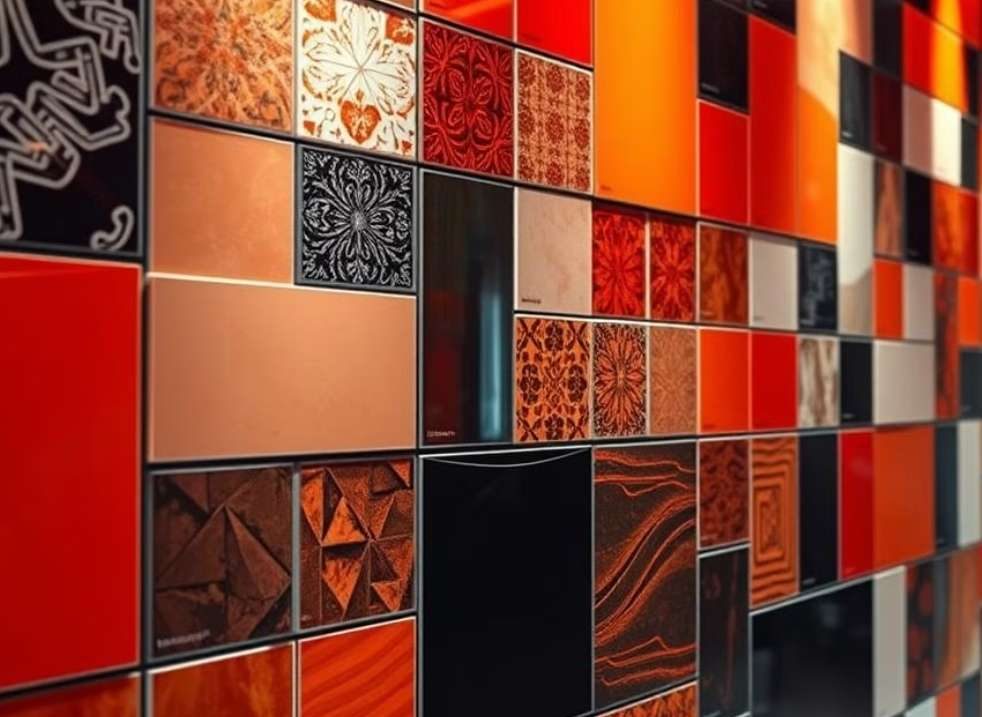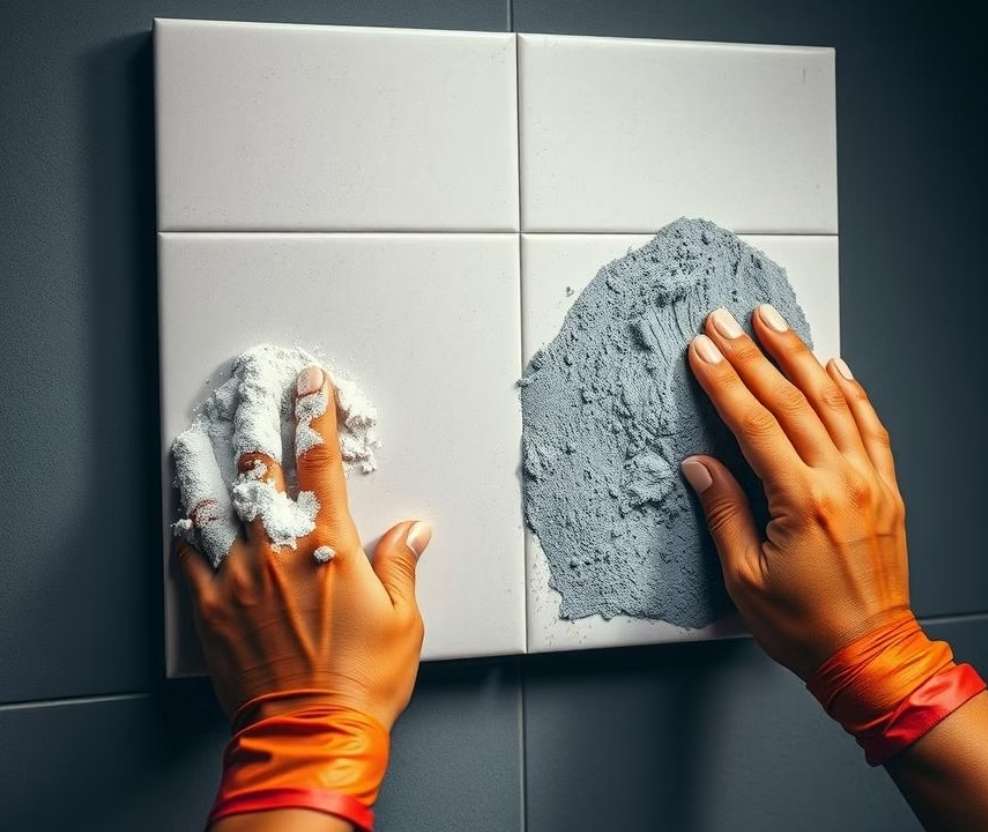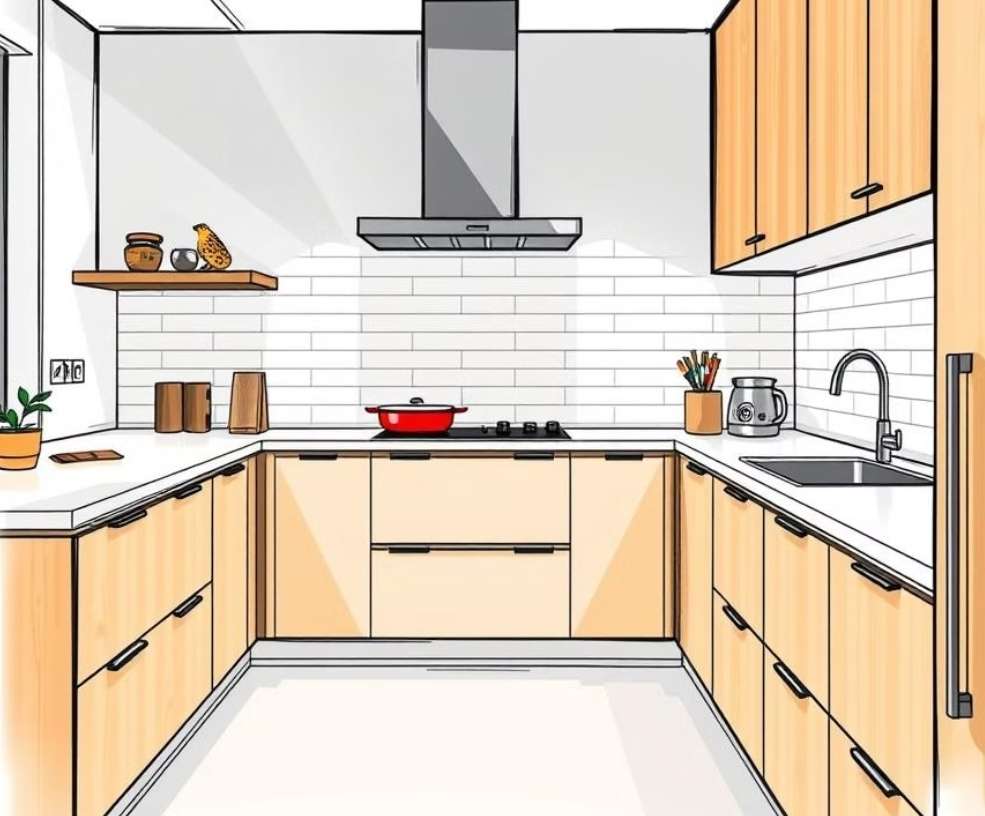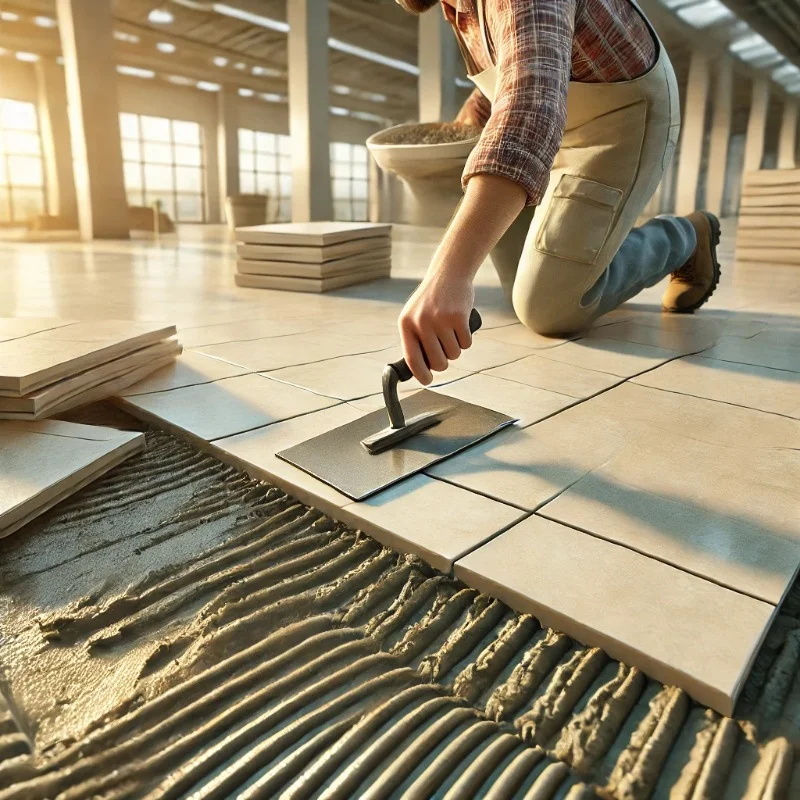Comparison of powder and paste tile adhesives
Powdered Tile Adhesive – Choosing the right adhesive for your tile installation has a huge impact on the final quality of your project and its durability. Tile adhesives come in a variety of types, each designed for specific conditions. In this article, we will review and compare powdered, paste, and porcelain tile adhesives to help you choose the best option for your needs.
Tile adhesives available on the market are divided into two categories: powder and paste adhesives. Each of these adhesives has its own characteristics and applications. Porcelain tile adhesives, which are a subset of powder tile adhesives, are specifically designed for porcelain tiles. This adhesive has unique characteristics and is designed for installing heavy and durable tiles, especially porcelain tiles.
In this article, we will first introduce the features and benefits of each type of adhesive, then we will examine their applications and compare their performance and strength. Finally, we will compare the costs associated with using each of these adhesives.
Definition and characteristics of powder and paste adhesives
Tile adhesives are an important component in tile installation, and choosing the right type can have a big impact on the final result. Adhesives are divided into two main types: powder and paste. In this section, we will discuss the characteristics of each of these adhesives.
- Powder adhesives: Powder adhesives are made from a combination of cement, chemicals, and mineral additives. These types of adhesives are supplied dry and must be mixed with water or other materials to be used. Due to their special composition, powder adhesives are highly resistant and can withstand changes in temperature, humidity, and pressure. These adhesives also have good flexibility, which makes them work well in different spaces with diverse environmental conditions.

- Paste adhesives: Paste adhesives come ready-to-use and do not require mixing. They are ideal for small projects and indoor environments because of their ease of use. Paste adhesives are typically used for installing lighter tiles and in spaces that do not have a lot of exposure to moisture, such as interior walls.

Advantages of using powder adhesives
Powder adhesives have many features that make them an ideal choice for many projects. In this section, we will discuss some of the benefits of using powder adhesives.
- High resistance: Due to their special composition of ingredients, powder adhesives are highly resistant to changes in temperature, humidity, and pressure. This feature makes them suitable for use in wet spaces such as bathrooms, swimming pools, and outdoor environments.
- Long-lasting: Powder adhesives are very durable and, compared to other adhesives, are very suitable for long-term projects.
- Flexibility: Due to their high flexibility, these adhesives prevent tiles from cracking due to temperature changes or vibrations.
- Ability to adjust thickness: One of the important features of powder adhesives is that the thickness of the adhesive can be adjusted by adjusting the ratio of water to powder and used for different types of projects.
- Wide application: Powder adhesives can be used to install tiles on a variety of surfaces such as cement, concrete, and even old tiles.
Advantages of using paste adhesives
Paste adhesives have their own unique properties that make them useful for specific projects. In this section, we will discuss some of the benefits of using paste adhesives.
- Minimal need for additional equipment: Unlike powder adhesives that require a mixer, paste adhesives can be easily applied with just a spatula.
- Suitable for indoor environments: These types of adhesives are more suitable for installing tiles on interior walls due to their better performance in constant temperatures and dry environments.
- Easy to use: Paste adhesives do not require special skills to use and can be easily used by anyone.
Comparison of the efficiency and strength of powder and paste adhesives
One of the most important factors in choosing an adhesive is its strength and performance. In this section, we will compare powder and paste adhesives in this regard.
Powder adhesives perform much better in terms of resistance to environmental conditions, especially humidity and temperature. These adhesives are especially suitable for heavier tiles and porcelain tiles that require higher adhesion. Powder adhesives also work well in humid spaces such as bathrooms, swimming pools and outdoor environments.
In contrast, paste adhesives are suitable for interior projects and lighter tiles due to their unique characteristics, such as ease of use. They perform particularly well when installing tiles that have little contact with moisture, such as interior walls.
Paste adhesives must have their moisture removed in order to dry, while powder adhesives, because they contain cement, use water to dry and harden.

Porcelain adhesives: specific choices for specific tiles
Porcelain tiles, due to their special characteristics such as low water absorption and high strength, require an adhesive that can support these characteristics. . These adhesives have special compounds that allow them to provide excellent adhesion and long-term durability. In addition, porcelain adhesives are also very suitable for installing heavier tiles and exterior projects.
The challenges of installing tiles using powder and paste adhesives
When installing tiles, whether using powder or paste adhesives, you may encounter challenges that, if not managed properly, can negatively impact the final quality of the work. These challenges can be particularly problematic in large projects or spaces with special conditions such as high humidity or temperature changes. In this section, we will highlight some of the most important challenges and their solutions.
Challenges of using powder adhesives
- Time-consuming mixing and preparation: One of the main challenges of using powder adhesives is the need to mix them properly. To achieve the desired result, the correct ratio of water to powder must be observed, and this requires a lot of time and precision. If this ratio is not adjusted correctly, the adhesive may not have sufficient adhesive strength or become too stiff and difficult to use.
Challenges of using paste adhesives
- Low resistance to moisture and pressure: Paste adhesives are less resistant to moisture and pressure than powder adhesives. Especially in spaces such as bathrooms and swimming pools, the use of paste adhesives can reduce the durability of the project. These adhesives are more suitable for dry and low-pressure environments.
- Lack of flexibility in certain conditions: Although paste adhesives are convenient and quick to apply, this characteristic makes them less resilient to certain environmental conditions (such as temperature changes or surface contraction and expansion). This can lead to tiles cracking or shifting over time.
- Not suitable for heavy tiles: Paste adhesives are not suitable for installing heavy, thick tiles such as porcelain tiles. These tiles require high-strength adhesives to support their weight. In these cases, powder adhesives or porcelain-specific adhesives are a better choice.
- Effect of ambient humidity on adhesive: Paste adhesives may not perform well, especially in humid environments. Although these adhesives have good resistance to moisture, high humidity in the environment may delay the drying process of the adhesive or cause cracks in the adhesive.

Important tips for choosing the right adhesive
Choosing the right adhesive for installing tiles depends on a number of factors. In this section, we will discuss the important points to consider when choosing a tile adhesive. These tips will help you make the right and effective choice for your project.
- Type of tile: The type of tile is the first important factor in choosing the right adhesive. For porcelain tiles, which require high adhesion due to their low water absorption and high weight, powder and special porcelain adhesives are the best option. For ceramic and lighter tiles, paste or powder adhesives are also suitable.
- Where to use: The environment in which the tiles will be installed will have a big impact on the choice of adhesive. If you are working in wet or stressed spaces such as bathrooms and swimming pools, you should use adhesives that are highly resistant to moisture and pressure. In this case, powder and porcelain adhesives are better options.
- Tile size and weight: The size and weight of the tiles is another factor to consider. For large and heavy tiles, powder and special porcelain adhesives that have high adhesive strength work best. These adhesives can withstand the high pressure and weight of the tiles well.
- Installation time and speed of implementation: If speed of project implementation is important to you, ready-to-use paste adhesives that require less preparation time may be more suitable.
- Cost: Cost is also an important factor in choosing an adhesive. Paste adhesives are typically more expensive, but can be more cost-effective on some projects due to their ease of use and shorter application time. Powder adhesives may be less expensive, but require special mixing equipment, which can add additional costs.
Investigating factors that affect the adhesion of adhesives
The adhesion of an adhesive depends largely on the environmental conditions and the characteristics of the surface to which the adhesive is applied. In this section, we will examine the various factors that can affect the adhesion of adhesives.
- Humidity: Humidity is one of the important factors that can affect the adhesion of adhesives. Powder adhesives usually have a high resistance to humidity, while paste adhesives are not suitable for use in humid environments. Special porcelain adhesives designed for installing porcelain tiles have good resistance to humidity and can perform well in humid conditions.
- Temperature: Ambient temperature also affects the performance of adhesives. At temperatures that are too high or too low, some adhesives may not work properly. Powder and porcelain adhesives work well at a range of temperatures, but paste adhesives may dry out or deform at temperatures that are too cold or too hot.
- Substrate: The surface the adhesive is applied to also affects the adhesion of the adhesive. Smooth, clean surfaces will give the best results with powder and paste adhesives. If the substrate is oily or dirty, the adhesive may not adhere well and its effectiveness may be reduced.
- Adhesive thickness: The thickness of the adhesive layer can also affect adhesion. If thick layers of adhesive are used, drying times may be longer, which can negatively affect the quality of the final work. Especially with powder adhesives, precise adjustment of the adhesive layer thickness is very important.

Conclusion
Choosing the right adhesive for installing tiles depends on the type of tile, the environment, and the needs of the project. Powder adhesives are the best option for large, professional projects, and porcelain and heavy tiles. Paste adhesives are suitable for small projects and indoor environments and are easy and quick to use. Finally, porcelain adhesives are the best choice for installing durable porcelain tiles in humid and outdoor spaces.
By considering these tips, you can choose the right adhesive for you and enjoy a high-quality and durable result.
